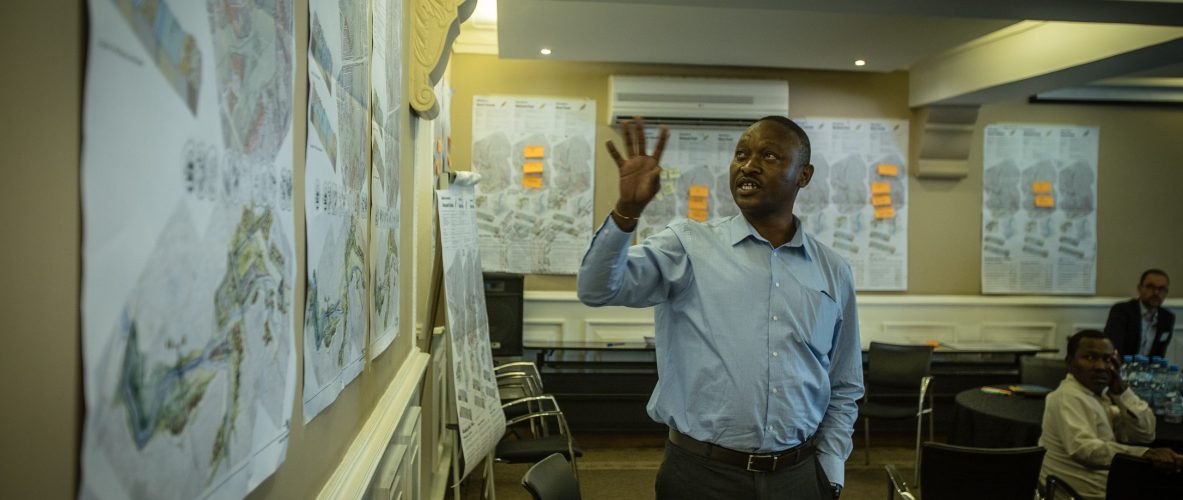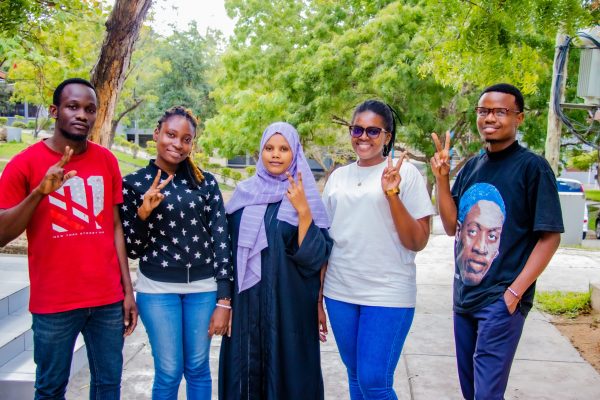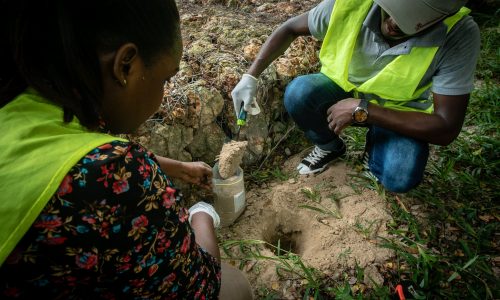TURP OVER THE YEARS
Tanzania Urban Resilience Program (TURP) is a collaborative effort between the governments of Tanzania and the United Kingdom.
Tanzania Urban Resilience Program (July 2016 -January 2023) is a partnership between the United Kingdom’s Foreign, Commonwealth and Development Office (FCDO) and the World Bank established to support the GoT in its endeavor to increase resilience to climate and disaster risk. The program focused on finding practical solutions to climate and disaster-related changes facing Tanzanian cities. It specifically focused on strategic solutions to the lack of risk data and information, inadequate urban and land use planning systems, and lack of appropriate infrastructure.
Over the years, TURP has supported local and national governments to strengthen their ability to prepare for, respond to, and adapt to a changing climate and withstand and rapidly recover from shocks. Extensive work has been done on urban flood resilience predominantly in Dar es Salaam and Zanzibar, which later on expanded to secondary cities, including Mwanza, Tanga, Morogoro, Tabora, Kahama, Geita, Kigoma, Kagera, and Sumbawanga.
Through its four pillars, TURP has built an extensive database of climate and disaster risks geospatial information, facilitated the identification of integrated flood risk reduction measures in Msimbazi valley and surrounding communities, strengthened emergency preparedness and response capacities of communities, cities and national government, and created a knowledge plat for university students to train in digital skills and urban resilience.

Pillar 1 – Risk Identification
Pillar 1 focused on innovative methods for the collection and dissemination of actionable climate risk data, to inform risk-reduction and response measures.
This Pillar strengthened the identification and understanding of climate risk and uncertainty in the local context and enhanced the linkages and coordination between risk-management stakeholders. To make decisions that ultimately strengthen physical, social, and financial resilience, a thorough understanding of disaster and climate risks in the local context and their implications is vital. This informs decision makers about the risks they face and the drivers of those risks. As such, Pillar 1 increased access to comprehensive information about physical and societal exposure to climate risks, which inform implementation of structural and non-structural mitigation measures.


Pillar 1 – Risk Identification
Pillar 1 focused on innovative methods for the collection and dissemination of actionable climate risk data, to inform risk-reduction and response measures.
This Pillar strengthened the identification and understanding of climate risk and uncertainty in the local context and enhanced the linkages and coordination between risk-management stakeholders. To make decisions that ultimately strengthen physical, social, and financial resilience, a thorough understanding of disaster and climate risks in the local context and their implications is vital. This informs decision makers about the risks they face and the drivers of those risks. As such, Pillar 1 increased access to comprehensive information about physical and societal exposure to climate risks, which inform implementation of structural and non-structural mitigation measures.

Pillar 2: Risk Reduction – Building Community Resilience
Guided by the data and management tools of Pillar 1, Pillar 2 strengthened cities’ capacity to plan for and reduce climate risk through both structural and non-structural measures that address long-term systemic risk.
In partnership with government entities, civil society, and the private sector, activities supported by Pillar 2 focused on reducing the vulnerability of people, households, and communities. They provided analyses of non-structural resilience measures, offering new or improved policies and legislation, better land use planning, environmental protection and basin plans, hazard zoning and building codes, and the design of risk-reduction works, such as drainage upgrades, ponding schemes, slope stabilization, and retrofitting or reinforcement programs.
Pillar 3: Disaster Preparedness & Emergency Management
Pillar 3 supported all stakeholders involved with short-term disaster events and preparedness for specific emergency scenarios.
Also guided by Pillar 1 data, Pillar 3-collected scenarios of city risk that were used to establish best practices around identifying and preparing vulnerable groups, emergency response plans, and an operations center; design of Early Warning Systems (EWSs); requirements for equipment, tools, and infrastructure; and simulations, drills, and damage assessment capacities.
Stakeholders in this work-stream are concerned with civil protection, disaster management, community volunteers, coordination for response, and recovery actions.


Pillar 3: Disaster Preparedness & Emergency Management
Pillar 3 supported all stakeholders involved with short-term disaster events and preparedness for specific emergency scenarios.
Also guided by Pillar 1 data, Pillar 3-collected scenarios of city risk that were used to establish best practices around identifying and preparing vulnerable groups, emergency response plans, and an operations center; design of Early Warning Systems (EWSs); requirements for equipment, tools, and infrastructure; and simulations, drills, and damage assessment capacities.
Stakeholders in this work-stream are concerned with civil protection, disaster management, community volunteers, coordination for response, and recovery actions.

Pillar 4: Resilience Academy
The Resilience Academy is an evolving virtual program anchored in Tanzanian universities and training institutes that delivers digital curricula, practical experience, training placements and courses, and equipment to support survey, maintenance, risk-monitoring, and analysis activities.
Under Pillar 4, TURP transferred data sets and risk analysis tools to university programs, and leveraged yearly placements in industry programs to provide university students with real-world experience in collecting, analyzing, and applying risk data.
The Resilience Academy’s goals are to foster a legacy for skills and tools developed through TURP and to build partnerships between academia and practitioners that enhance the sustainability of risk-management practices and data sets in Tanzania.



